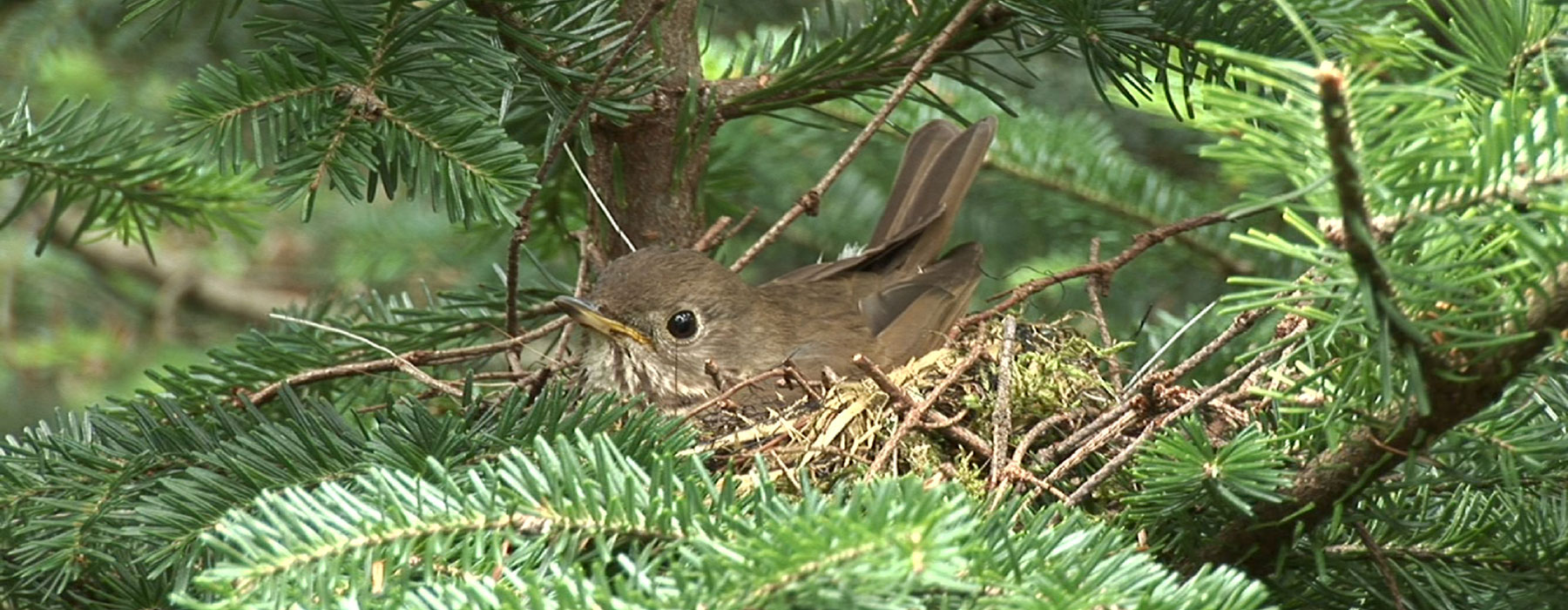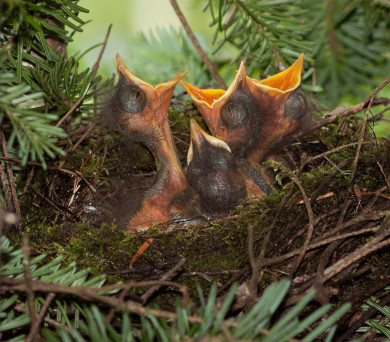We've netted and banded, censused and mapped, searched and monitored nests, and radio-tagged and followed these birds. We've counted cones on trees and the squirrels in them. And we've swatted hoards of black flies along the way. George Wallace’s remark written in 1939, after he studied these birds for several seasons on Mount Mansfield, dogged and defined us - “Only a freak ornithologist would think of leaving the trails for more than a few feet [due to] the discouragingly dense tangles [of vegetation]".
The challenges were daunting and rewards came slowly, but we persisted. We established intensive study sites on two Vermont mountaintops: Mount Mansfield and Stratton Mountain. Setting up a summer-long residence in the unused ski patrol huts on both peaks, our field crews gamely endured punishing hours and field conditions. From assessing the potential impacts of alpine ski slopes or climate change, to uncovering a strange mating behavior or population connectivity, or unraveling the mountain's ecology; our scientists have been examining it all for over 20 years. All in an effort to have the best science available for conservation.
KEY FINDINGS
- A strange mating system – while trying to understand how ski areas may affect songbirds, our scientists uncovered a behavior rarely found in songbirds. Multiple, unrelated males helped to feed the chicks of each nest, and the brood of each nest had many fathers. Using DNA, video surveillance, and radio telemetry, we were able to peek into the breeding life of Bicknell’s Thrush, important for understanding how these birds use their habitat.
- Tree seeds, red squirrels, and songbird productivity – Without an understanding of the underlying ecology, its difficult for our scientists to understand the conservation of these songbirds. Through detailed studies and observations we’ve discovered that balsam fir seed is a keystone resource, creating population cycles affecting mammals and songbirds.
- Effects of alpine ski area development on songbirds – From 1995 to 2008, our scientists studied the ecology and population dynamics of Bicknell’s Thrush and other songbirds on two Vermont ski areas, the Stowe Mountain Resort on Mt. Mansfield and Stratton Mountain. Finding and monitoring nests, banding birds, and radio tracking their movements helped us to determine if these areas affected songbirds. Our work has helped spawn management recommendations and construction mitigation throughout the region.
- Climate change – VCE biologists studying birds in the mountains of New York and New England, conclude that the most vulnerable birds may be those nesting in high-elevation forests of spruce and fir. Rising mean summer temperatures, as little as 1°C (1.8°F), would eventually reduce by more than half the critical mountain habitat for many nesting bird species.


